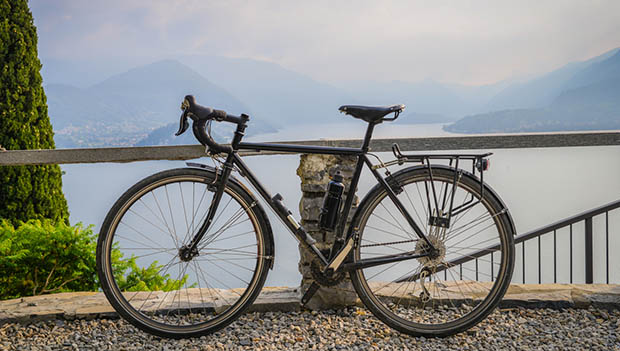
If you're not familiar, the "N+1 rule" has been a cycling commandment for as long as bikes have been around. The variable "N" describes the bikes you currently own, so based on this formula, there's always room for one more in the garage. Over time, it's not uncommon to have collected a wide range of rides. This might include a road bike you race with, a road bike you train with, a mountain bike (hardtail and full suspension), a single speed, a commuter, a triathlon bike—the options are virtually endless.
While we can't say we disagree with this logic, there's been an increasing trend in recent years of cyclists thinning out their stable, with some opting for one "do-it-all" bike instead of designated bikes for each discipline.
To be clear, there's no perfect one-size-fits-all option—there's a reason bikes are specifically developed for a specific use—but here we discuss why a do-it-all bike might just be what you're looking for.
Simplicity Is Everything
Owning multiple bikes can oftentimes be a lot of work. Not only do you have to manage the upkeep (lube chains, adjust brakes, swap bar tape or grips, monitor tire wear, yearly tune-ups), but you have to store these bikes, too.
Even if you fancy yourself an allrounder, most cyclists prefer one discipline over the another, which usually means some bikes are left in the corner unused. A do-it-all bike keeps things simple and can tackle whatever you throw at it, regardless of the type of ride you have in mind.
The Rise of the Gravel Bike
The bike industry took note of this do-it-all trend. Gravel bikes have been gaining popularity in recent years, as have gravel/mixed terrain races and organized rides.
For those not familiar, a gravel bike is a combination of a road bike and a cyclocross bike and is a great tool for anything from pavement to gravel to dirt roads. Generally, they're equipped with disc brakes and a larger tire clearance to accommodate higher-volume or knobby tires. They also usually have lower bottom brackets, longer wheelbases and a geometry that allows the rider to pedal in a more upright position.
Fans of gravel bikes usually cite the lack of traffic and the ability to ride (and handle) comfortably on mixed surfaces as their biggest draws. For some, a gravel/adventure bike checks all the boxes. For others who might mix in some singletrack or bikepacking excursions, a custom route is a stronger option.
Start With the Right Frame and Handlebars
If you decide to go with a custom build, the frame is the most important piece to keep in mind when building a do-it-all bike. Cover the basics—you want something that fits you right, is durable and is within your budget. Remember, this bike needs to be strong enough to bomb down singletrack but shouldn't be too heavy to log faster miles on the road. As mentioned previously, tire clearance is especially important on a do-it-all bike. Make sure you pick a frame/fork with plenty of room for a variety of tire options and size. This frame won't be the perfect solution for anything, but it needs to appropriate for everything.
The same goes for the handlebars—some riders opt for flat bars while others prefer drop-bars. Whichever you choose, don't forget you'll be purchasing shifters designed for this specific type of handlebar, making swapping handlebars tough and not very realistic.
Accessories and Components
A do-it-all bike can really come to life by having different accessories and components for different applications on hand. This includes a range of stem lengths, cassettes, tires, wheels and accessories like racks and panniers. Making one bike work for all your needs is possible and is much more feasible by adjusting your bike for the task at hand.
Are you competing in a time trial? Make sure you have clip-on aero bars and are using 700c wheels with road tires. Planning on bikepacking? A comfy higher-volume tire and a solid rack and pannier setup would be ideal. Will you be tackling some singletrack? You might go with 26-inch rims with knobby tires. Be creative—the more you can tailor your bike on a per-ride basis, the better it will perform on the day.
Have you gone the do-it-all bike route? We'd love to hear from you—let us know what works (or what didn't work) in the comment section below!
READ THIS NEXT: 7 Reasons to Stow Your Road Bike and Pick Up Gravel Riding








Discuss This Article